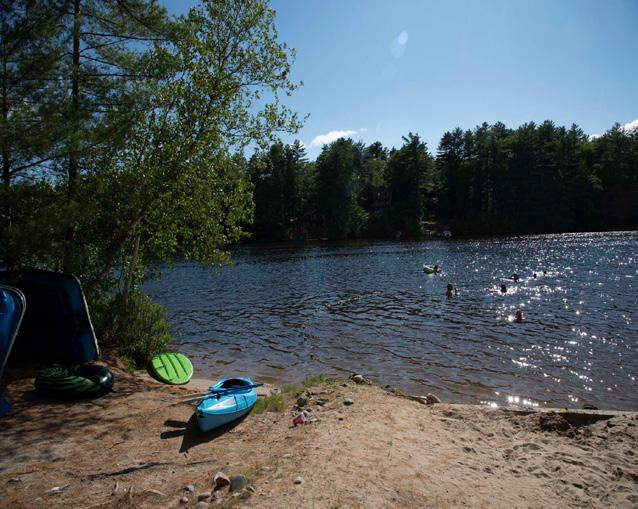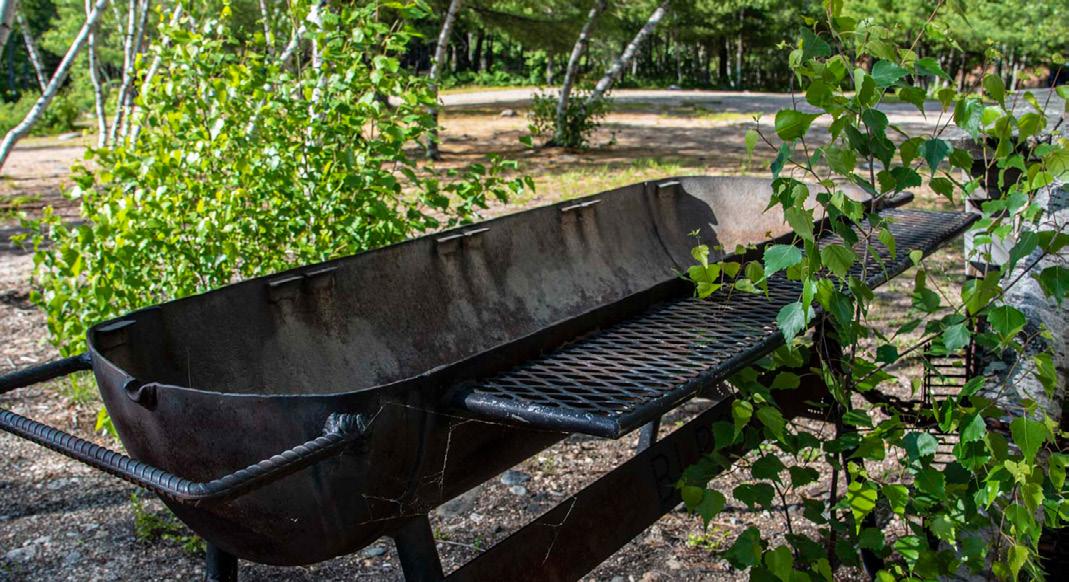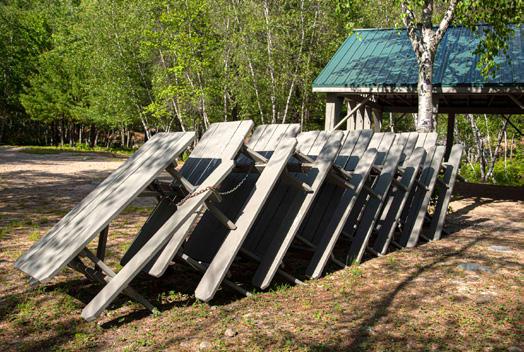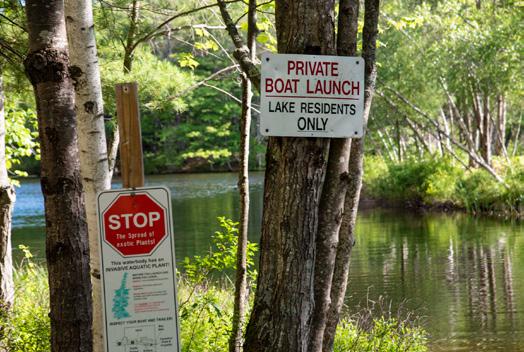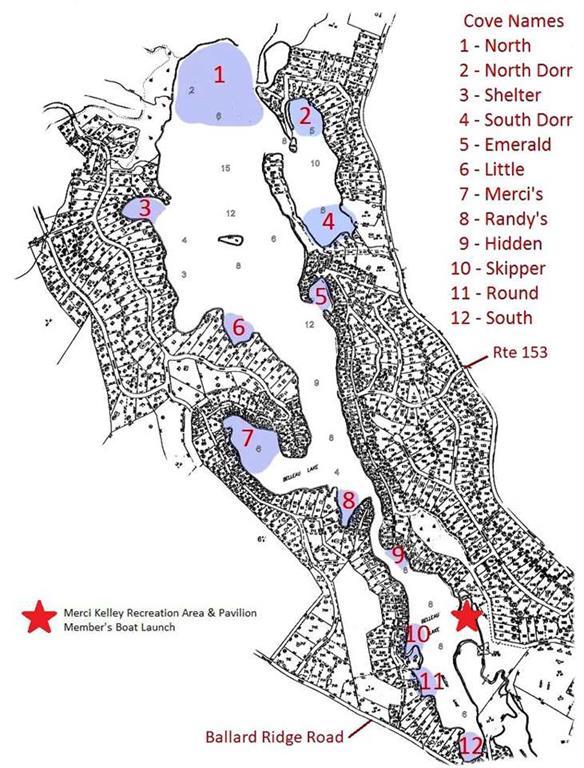View from the Belleau Lake Association Island Park
Lake Access to Belleau Lake, East Wakefield, NH
Imagine a place to build your dream home with access to everything a great lake community is all about, two separate association areas. One is a perfect sugar sandy beach to have the kids enjoy swimming to take in the sun. The other is a private gated area with parking, a boat launch and portable toilet and a bridge to a community island with picnic grounds, horse shoe pits plenty of tables, grills, and a spectacular covered Pavilion for entertaining in shade. Both beach areas are a short distance from your perfect lot for the perfect home to be built.
This is a rare lot available not far from the beach with .71 acres, lush with forest and private areas to plant your home. Walk or travel by golf cart to one of the two beaches and park areas for a day at the lake without paying waterfront home taxes. This is a very well organized community that takes care of everyone.
Come home to a place few are lucky enough to call a vacation spot with your perfect home you can design and build. There is no builder tie-in so bring your plans and plan on a lifetime of memories.
Belleau Lake
Belleau Lake is a 187 acre lake in a 5.82 square mile watershed in Wakefield, NH. It is an artificial lake formed by the damming of the Little Ossipee River headwater. It flows over a dam through Woodman Lake and into Balch Lake. There are two private shared beaches, gated area for a boat launch and bridge to an island complete with Pavilion, picnic tables, grills portable toilet and so much more.
Belleau Lake Beaches and Amenities
The Rich History of Wakefield, New Hampshire
The town of Wakefield is home to seven pristine lakes and is located in the southern most portion of Carroll County. Wakefield is a border town with Maine and is a serene, peaceful location.
The town was chartered in 1749 when the Masonian Proprietors conveyed seventy nine 100 acre parcels to investors from Dover Somersworth and Kittery. They knew a good opportunity. Many of these investors never really settled in town however they did end up selling smaller lots to new settlers.
Six acres was set aside for the meeting house, a school, a training ground and a burial ground on what is now Lovell Lake. In 1771 in the meeting house plans for the Revolutionary War were formulated, and voting for the democracy and for George Washington occurred.
Now Wakefield consists of 7 villages--East Wakefield, North Wakefield, Province Lake, Sanbornville, Union, Wakefield Corner, and Woodman.
The first known mills, Wakefield’s first grist and sawmills, were established by David Copp near the headwaters of Lovewell’s Pond near today’s Town Beach.
On August 30, 1774 a petition was presented by local residents to Governor John Wentworth and the Town of Wakefield was incorporated. It was the responsibility of the Town fathers to look after the spiritual and material welfare of the Townspeople. In 1785, Asa Piper, a graduate of Harvard, was hired as pastor and continued to serve until his death in 1835. Education was funded by the Town in 1776 and a school committee
was established. Rev. Piper established the first circulating library in Wakefield and Brookfield. Ultimately there were 12 school districts. It is believed that the degree of higher education promoted here led to many residents, male and female, to attended college in the 1800’s and early 1900’s.
By 1789, there were 7 mills in town. All were positioned to harness water power from the many streams, rivers and outlets of our lakes and ponds.
Wakefield offered timber in its never ending forests. Hard and soft woods were harvested and milled for the manufacture of boards, shingles, boxes, and other products. Wakefield was also was conducive to agriculture, settlement and industry. Water features provided the setting for mill construction; local timber and stone were used to construct dams and mills. Local forests were harvested for lumber and wood products.
Six stagecoach lines merging here, several inns and taverns were built to accommodate the traveler and business thrived. The First sawmills were built to supply home construction, then
railroad stations were built in Wakefield Corner, East Wakefield and North Wakefield which expedited the way to transport goods and travelers.
Two ice companies purchased 1000 feet of frontage on Lovell Lake and began harvesting ice with 16 to 20 train carloads heading to Boston daily. Until electrification and refrigerators diminished the need for ice.
The popularity of the automobile further reduced the need for rail travel like everywhere in the country. However the many lakes and streams here did play and continues to play a huge role in the economic growth and jobs in Wakefield. Waterfront development is still Wakefield’s primary industry.
As the automobile use increased, rail was no longer the preferred transportation mode. Rt. 16 was built which bisected through the villages of Wakefield. Along this route, overnight cabins, teahouses, general stores and gas stations were established. The mid 1950’s, brought the relocation of Rt16 to the western edge of Wakefield, and bypassing much of Wakefield while retaining the rural character of the villages.
gristmills for grinding corn, wheat and oats. Over time more industrial operations were established. From 1854-1871 the Eastern Railroad enabled farmers to bring their goods to Union to be transported to Boston and beyond. Three additional
By the end of the 1980’s most of the waterfront property had been developed into seasonal or year round homes.
As the cost of owning a vacation home increased, we now see the second home population replaced with the many permanent waterfront homes we see today.
Belleau Lake on a Great Summer Day



